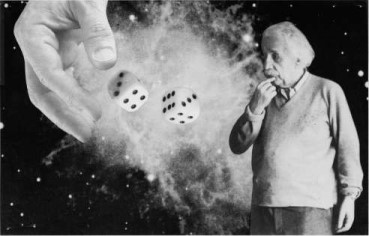seytil.info
WORLDLANG

Worldlangs are auxiliary international constructed languages using the
languages of the entire world as the source. The word
"worldlang" is
derived from "world" and "conlang", i. e. constructed
language.
History
Language Sona by Kenneth Searight published
in 1935 perhaps is the
first well known worldlang. Charles Kay Ogden wrote in the
preface to
the book of Sona:
"The suggestion that Esperanto or
Ido,
Occidental or Novial, is ‘neutral’ for the East is like saying that if
the Chinese or Japanese came to Europe with a form of Cantonese whose
endings had been changed, and which was used by no one in China or
Japan, though some of its roots were common to Chinese, Japanese, and
certain groups in Mongolia, it would for these reasons be ‘neutral’ for
Europe, India, Africa and the rest of the East."
Kenneth Searight wrote in the book:
"There is no reason why we should
not borrow,
assimilate, and methodize many of the radical elements of many
languages, such as I.G.: PA (feeding), C.: TA (great), A.: RU (go), J.:
TE (hand), T.: SU (water), and so on, provided they fit in to the
general scheme."
(I.G. Indo-Germanic;
C. Chinese; A. Arabic; J. Japanese; T. Turkish)
Language Loglan was beginning in 1955 by Dr
James Cooke Brown. Like
Sona, Loglan consists of a limited number of standardised constructed
words-radicals. The lexemes are constructed by composing phonems of
words from the nine source languages: English, Chinese (Beijing
dialect), Hindi, Russian, Spanish, French, Japanese, German.
By some reguard, the history of worldlangs reproduces the general way
of interlinguistics: from filosofic and schematic forms to more
naturalistic
ones. As a rule, in later projects words are not constructed but
borrowed from source languages. Language Ceqli was created as an effort
to humanize Loglan.
Some methods of constructing
Let
us say, constructing a good worldlang is a very difficult thing. Well,
the simplest way is to collect words from different languages of the
world according to your own preferences, so you take words which seem
sounding good for you. Formally it would be a worldlang. But also in
case you construct a language totally a priori, inventing words only
from your own mind, the result may be of the same level. A final user
sees a text of completely unknown words and haven't an idea, why one
should study such a language.
You begin to think, your worldlang should be based on something more
serious. You may consider the six working languages of the UN:
English,
French, Russian, Spanish, Mandarin Chinese, Arabic. Being not
completely content of the selection of the UN, you add Hindi and
something else. Supposing the most people in the world know at least
one of this languages, and some words are shared, we hope the final
user will find 20% or more of already known words, beginning to study.
It
may seem a good decision while such a project is only one. In case of
several projects based on this method, the projects are too different,
and the success of this or that project depends mostly of the force of
advertising. Some people will agree with this, but most of them prefer
old good Esperanto. From a worldlanger's point of view Esperanto or
Interlingua, they are the same language, you know.
Searching for something more advanced, you begin hunting for
international words in
the entire world. The point
is, that not only
Latin, or sometimes Ancient Greek, or nowadays English, produces
international words. Also often it can be Arabic, Persian, Hindi,
Chinese.
Collecting the heritage of old civilisations, you find a few hundred of
good internationalisms of Asia. It is an interesting experience by
itself. But then you meet the fact the world is more complicated than
you expected. Really, if this approach worked, a worldlang based on
this method already would be constructed in the XX-th century.
See Pandunia,
Lingwa
de Planeta.
Toki Pona, started perhaps as a
mere joke, became popular. It uses only 120 words and thus is
easy to learn.
A trick
 Constructing a good worldlang
is a difficult task indeed. If you have a
difficult task, high technology and some tricky thing may help. Talking
about high technology the author means scientifical etymology. Many
people even don't guess how precise science etymology is. Nowadays
linguists know
about origin of almost every word of almost every language. Work of
thousands professional linguists from the entire world stands behind
this knowledge. The amount of working time and intellectual efforts
needed to gain this knowledge surely is larger then that needed for
creating all operation systems for computers. Still you may say a
theoretic knowledge is not a technology. But if we intend to use this
knowledge for a practice task, for constructing a language, the
theoretical knowledge becomes a technology for us. Besides, it would be
very difficult to collect and use all this knowledge without a computer
and the global network.
Constructing a good worldlang
is a difficult task indeed. If you have a
difficult task, high technology and some tricky thing may help. Talking
about high technology the author means scientifical etymology. Many
people even don't guess how precise science etymology is. Nowadays
linguists know
about origin of almost every word of almost every language. Work of
thousands professional linguists from the entire world stands behind
this knowledge. The amount of working time and intellectual efforts
needed to gain this knowledge surely is larger then that needed for
creating all operation systems for computers. Still you may say a
theoretic knowledge is not a technology. But if we intend to use this
knowledge for a practice task, for constructing a language, the
theoretical knowledge becomes a technology for us. Besides, it would be
very difficult to collect and use all this knowledge without a computer
and the global network.
One of discoveries of scientific etymology is the phenomenon of false cognates, which are random
similarities between etymologically unrelated words of the same or
similar meaning. Unfortunately,
many profanes confuse false cognates
with false
friends. An example of false cognates would be Arabic فرح (farih) and German froh - "happy,
glad, merry". Linguists are not glad
of such a discovery. The false cognates not only are useless, but they
also serve bad for popularisation of the sciense. Although it may be
mathematically
proved, that false cognates must exist in abundance, the
public often don't believe some words are not cognates when they sound
similarly and mean the same thing. Sometimes scientific facts do not
accord with expectations of ordinary human intuition. Internet is full
of strange people trying to reconstruct prehistoric words of the world
common pre-language of the distant past, unconsciously dealing with
false cognates. The idea is to act vice versa, to consciously use the
phenomenon of false cognates, say, to construct an artificial
post-language for the future. So, a tricky thing we may use is false
cognates.
False cognates may be collected for pure amusement, and this may serve
for popularisation of the scientific etymology if well explained.
Facebook has a closed group "Linguistic coincidences & curiosities"
which is dedicated to this theme. The group was created in 2011 by
professional linguists, it has near 10,000 members (in 2018) and every
day several new examples of false cognates appear. There is an
important difference between collecting false cognates for amusement
and for constructing a worldlang. When collecting false cognates for
amusement very close phonetic similarity is highly estimated, and
similarity based only on two common consonants is criticised as not
amusing and is not welcomed. Precise semantic similarity is welcomed,
but is not necessary, semantic connection often is only by association,
or sometimes direct antonyms are considered. Examples often are about
words having a little number of speakers, from reconstructed
pre-languages or from dead languages. For constructing a worldlang all
this is inverted. The most important thing is that a selected
word must involve as many speakers as possible, including its cognates
and false cognates in other languages. Semantically words must mean the
same thing. Phonetic similarity may be based only on two common
consonants, and most often so it is.
Random similarity of unrelated words in different languages, having the
same meaning, using for constructing a worldlang, has its own sense and
its own rules. Not all false cognate are suitable. Thus a special term
for this phenomenon is needed. Let it be named syllexia. So,
generally, syllexia is
the same thing as false cognates, but with its special feachers
needed to create a worldlang. Esperanto, Interlingua and other
euroclones are based on the phenomenon known as international words,
most of them are of Latin origin. Hundreds of euroclonic projects was
created, and all they are similar to each other, because all they are
based on the same idea. Syllexia for a worldlang may act in the similar
way as international words act for the euroclones. Different wordlang
projects constructed using syllexia must be similar to each other like
euroclones are similar. This is the main cause to use the idea.
In the history of physics Albert Einstein didn't believe in quantum
mechanic, saying God doesn't play dice. Random similarities in
languages also look like God playing dice. And like Albert Einstein
some worldlang experts don't believe this divine game is useful for
creating a worldlang. Syllexia
in interlinguistics is like quantum mechanic in physics – it is
difficult to understand and to imagine how it works, but it must work.
Constructed syllexia of Lojban/Loglan
Artificial languages Lojban and Loglan also are classificated as
worldlangs. Lojban uses words specially constructed to have common
phonemes with words of its six source languages. Loglan has nine source
languages. But words not constructed but taken from existing languages
can work in a similar way. In this case the number of source languages
needn't be limited. At the time Loglan and Lojban was created the
authors could use six or nine dictionaries, but they couldn't search
through the all languages. It became possible only in XXI-th century.
april 2018
seytil.info



 Constructing a good worldlang
is a difficult task indeed. If you have a
difficult task, high technology and some tricky thing may help. Talking
about high technology the author means scientifical etymology. Many
people even don't guess how precise science etymology is. Nowadays
linguists know
about origin of almost every word of almost every language. Work of
thousands professional linguists from the entire world stands behind
this knowledge. The amount of working time and intellectual efforts
needed to gain this knowledge surely is larger then that needed for
creating all operation systems for computers. Still you may say a
theoretic knowledge is not a technology. But if we intend to use this
knowledge for a practice task, for constructing a language, the
theoretical knowledge becomes a technology for us. Besides, it would be
very difficult to collect and use all this knowledge without a computer
and the global network.
Constructing a good worldlang
is a difficult task indeed. If you have a
difficult task, high technology and some tricky thing may help. Talking
about high technology the author means scientifical etymology. Many
people even don't guess how precise science etymology is. Nowadays
linguists know
about origin of almost every word of almost every language. Work of
thousands professional linguists from the entire world stands behind
this knowledge. The amount of working time and intellectual efforts
needed to gain this knowledge surely is larger then that needed for
creating all operation systems for computers. Still you may say a
theoretic knowledge is not a technology. But if we intend to use this
knowledge for a practice task, for constructing a language, the
theoretical knowledge becomes a technology for us. Besides, it would be
very difficult to collect and use all this knowledge without a computer
and the global network.